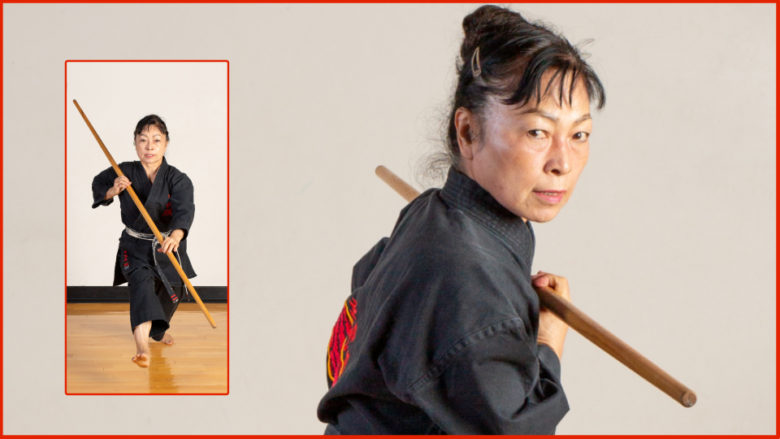A Walking Stick

六尺棒
The bō (or staff) comes in many lengths. Koburyū kobudō includes just the six foot staff, roku shaku bō. It is the kobudō student’s first weapon. The bō is used to strike, thrust, parry, sweep and smash. Because it was common to see people walking with canes or balancing pails of water across their shoulders, bō could be carried openly even though weapons were banned.
Roku Shaku Bo Kata
1. Shushi no Kon 周氏の棍
Shushi is a man’s name. Not much is known about the origin of this kata.
2. Choun no Kon 朝雲の棍
Because of the Japanese occupation of the island of Okinawa, both karate and kobudo were practiced in secrecy, usually at night. The island of Okinawa is actually just one island in an archipelago. Not all of the islands of the archipelago were occupied by Japanese. The island where Chōun No Kon was developed was not occupied. Therefore, weapons could be practiced in the open – under the morning clouds.
3. Sakugawa no Kon 佐久川の棍
Kanga “Tode” Sakugawa (1733 – 1815), created the bō kata, Sakugawa No Kon. Sakugawa was a pechin (Okinawan samurai) in the Ryūkyū (ancient Okinawan) capital city of Shuri. He was sent on a mission to China by the Okinawan king. There he became fascinated by the martial arts of China. He remained in China for ten years to study Chinese arts before returning to Okinawa. He is remembered for his skills in both karate and bō techniques.
4. Chiken No Kun 津堅の棍
The bō kata, Tsuken No Kon, is named after the island where it was created. It is said that the island was named after Tsuken (Chiken in Okinawan dialect), who took refuge on the deserted island to escape a samurai bent on revenge for an accidental killling. Tsuken is remembered for his skills in karate, bō and sai.
5. Shiishi No Kun 添 石の棍
Shiishi no kun is Okinawan dialect. The same kanji are pronounced Soeishi No Kon in standard Japanese. Shiishi (or Soeishi ) lived in the 1600’s. He is remembered for his skills in both karate and bō techniques.

